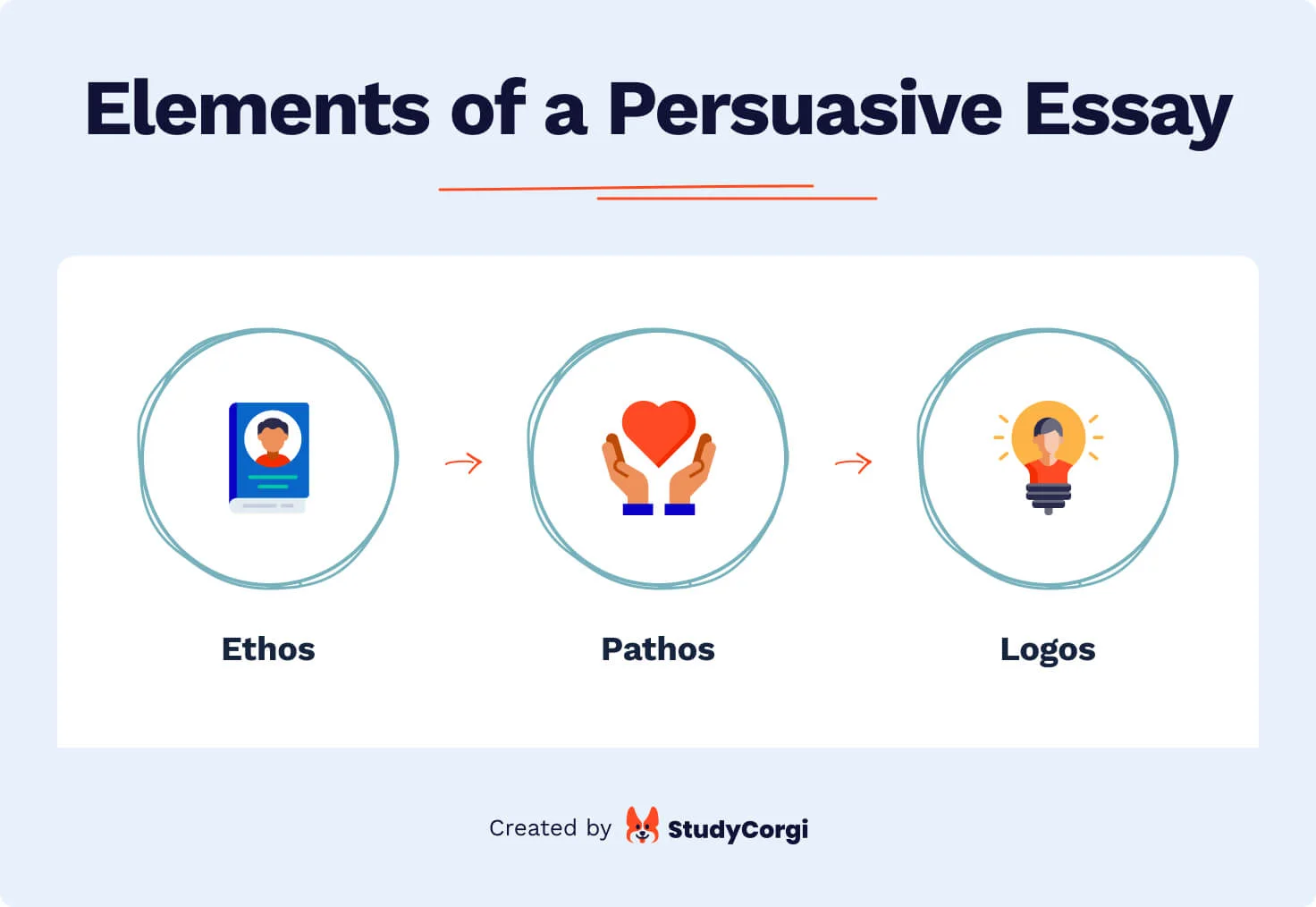💡 How to Use the Persuasive Essay Generator
In addition to being smart, our generator is also elementary to use:
- Type in your topic.
- Select how many body paragraphs you want.
- Customize the main body by adjusting the app’s settings (optionally.)
- Press “Generate” and get a persuasive essay draft just like that.
Keep in mind that our app is not intended to produce ready-made essays! It will provide you with inspiration and ideas which you can use in your own writing.
🔥 Persuasive Essay Maker Benefits
Our essay creator is among the top apps available online. Check out its incredible perks:
✍️ What Is a Persuasive Essay?
A persuasive essay is a text that combines logical arguments with emotional appeal to make readers agree with a specific point of view. Usually, it starts with a query, which the author then uses to make a statement for or against the topic in question. All the arguments should be supported by evidence from different sources or personal experience.
📚 3 Elements of a Persuasive Essay
There are 3 key elements required for any persuasive essay: ethos, pathos, and logos. These concepts created by the famous philosopher Aristotle work together to create a line of arguments that seeks to persuade others of your point of view.

- Ethos is a component of the argument a speaker uses to establish their authority and prove their point. Readers are more likely to believe someone they know to be knowledgeable, experienced, and respected.
- Pathos can be translated as “passion.” The purpose of this element is to stir up powerful emotions in the reader. You may use strong language, share personal experiences, and employ vivid imagery to evoke empathy, fury, or other emotions.
- Logos is based on facts, evidence, and proof. Essays based on a logos-driven approach refrain from mentioning anyone’s reputation, feelings, or opinions.
🎊 Persuasive Essay Structure
If you want to write an excellent persuasive essay, knowing its structure is vital. No matter how clever its concept is, a paper without a compelling introduction, coherent body paragraphs, and clear conclusion is not going to make it. Let’s review each part of a persuasive essay separately.
Introduction
A well-written introduction consists of 3 integral components:
Main Body
A main body includes 2, 3, or more paragraphs. Each contains an argument supported by evidence, examples, and other information. You should pay attention to how your body paragraphs are organized because each one needs to represent a specific idea. Also, each paragraph should start with a topic sentence that briefly describes what argument will be presented there.
Conclusion
A conclusion summarizes all the arguments. It aims to finalize the essay’s main idea that was reviewed throughout the main body. It should also give the reader closure after reading your text.
🎓 How to Write a Persuasive Essay
In this next segment, you’ll find a small handy guide that will teach you how to write an excellent persuasive essay. Let’s proceed to the first step!

1. Choose Your Topic
Picking a topic is the first critical step in creating a persuasive essay. Keep in mind that if you choose something that you find captivating, it will be easier to complete your assignment. You will enjoy delving into a topic that resonates with you emotionally or personally. Besides, you won’t get bored researching something that interests you.
2. Research Both Sides
It’s crucial to research your position on the topic thoroughly. But reviewing the opposing side will make your arguments even more persuasive. That’s why we recommend you be aware of the opposite viewpoint. To do it, you can follow these guidelines:
- As you research the topic, pay extra attention to those sources that view your topic from a different angle.
- Analyze other students’ essays and compare their points of view to yours.
- Imagine yourself as a critic and try to find the weak spots of your arguments.
- Use our generator to get fresh arguments that you haven’t thought of.
3. Make an Outline
Clearly organize your ideas using tables, numbers, or short prompts. Outlining your paper will give you a clearer understanding of your thesis and objectives. It will also prevent you from repeating yourself and forgetting to mention key arguments.
4. Find Persuasive Evidence
Your essay’s persuasiveness will depend on how much solid proof you provide. Here’s how you can enhance it:
- Try to pick only the most convincing evidence to back up your opinion.
- Use striking statistics and facts, but make sure not to exaggerate your position.
- Also, we recommend showing respect to the opposing side and presenting their proof as well.
- To connect with your reader, you can use anecdotes and tell stories from personal experience.
If you want to understand better which arguments to make and which evidence to include, try to analyze your audience. To do it, ask yourself:
- How old is your audience?
- What is their expertise level?
- Will the audience easily relate to your point of view?
5. Write a Draft
It’s time to start writing the first draft of your essay. Now all you have to do is follow your outline and transform all your ideas into arguments. Then, combine all the parts together into a coherent text.
Additionally, you can use our free persuasive essay generator to create a flawless draft that you can edit and rewrite as you see fit.
6. Edit and Proofread
After the draft is complete, you may begin proofreading and correcting it until it becomes a finished essay. To do it, follow this checklist:
- Remove any redundant or irrelevant information.
- Look for areas in your paper where something is missing or the argumentation is too weak.
- Ask your friends or relatives to read your essay and recommend corrections.
- Use helper apps like Grammarly to find and correct all of the mistakes.
- Ensure your essay is logically structured and has all the paragraphs from an outline.
And that’s how you write an essay! Feel free to use our free persuasive essay maker to increase the quality of your texts even further.
We also recommend using our reworder and title page generator.
Updated: